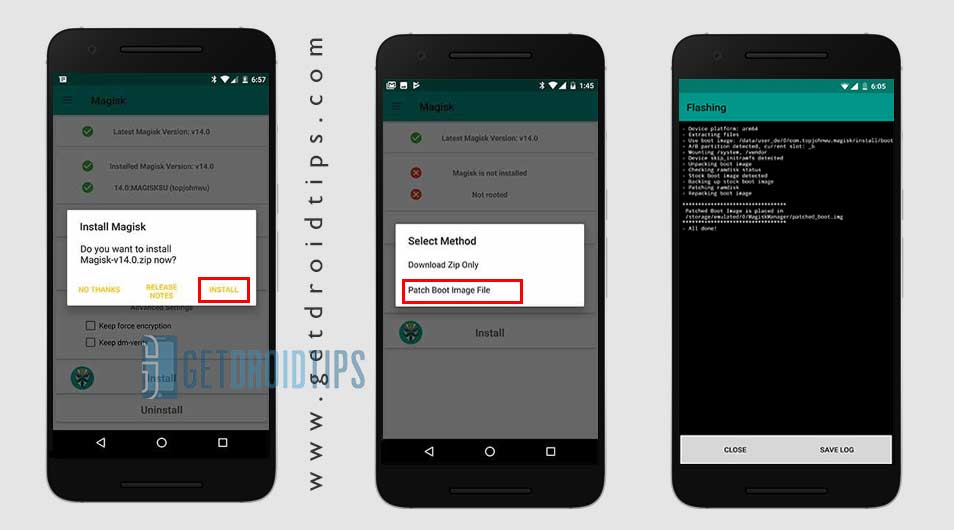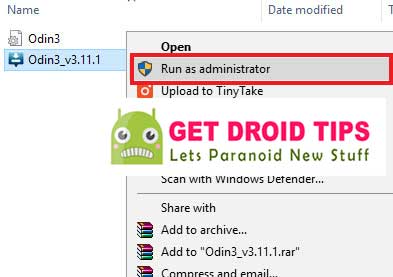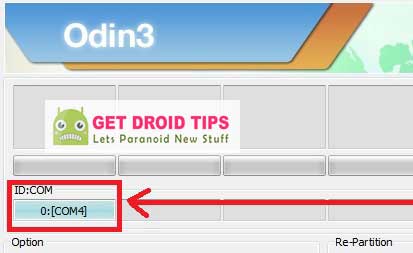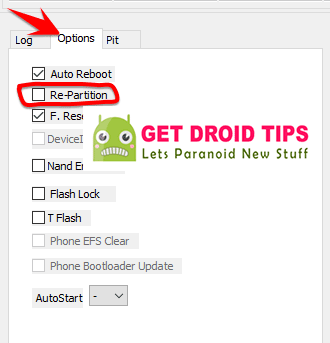Samsung Galaxy S22 Ultra 5G was the latest S series which comes with S Pen built into the phone’s body. The device features a 6.8-inch Edge QHD+ Dynamic AMOLED 2X display with a 120Hz adaptive refresh rate. It is powered by Qualcomm Snapdragon 8 Gen 1 and 12GB RAM.
On this page, we will guide you on how to root the Samsung Galaxy S22 Ultra 5G without the TWRP Recovery. To flash the rooting file, you must first unlock your device’s bootloader.
We will use the Magisk by patching the Stock ROM boot image file and flashing it to the device boot partition. The Galaxy S22 Ultra 5G device comes with variants SM-S908X (X stands for all variants). Follow the full article with all the requirements, download links, and flashing steps with images.
Also Read
Fix: Samsung Galaxy S22 Ultra Not Turning On
Fix: Samsung Galaxy S22 Ultra Keeps Crashing
Fix Samsung Galaxy S22 Ultra Won’t Recognize SIM Card Issue
Will Samsung Galaxy S22 Ultra Get Android 13 (One UI 5.0) Update?
Fix: Samsung Galaxy S22, S22 Plus, and S22 Ultra GPS Problem or Not Accurate
How to Install Custom ROM on Samsung Galaxy S22 Ultra
Fix: Samsung S22 Ultra Not Recording Video, Lagging, or Bad Quality
How to Fix If Volume Button Not Working on Samsung Galaxy S22 Ultra
How to SIM Unlock the Samsung Galaxy S22 Ultra?
Fix: Samsung Galaxy S22, S22 Plus, and S22 Ultra Android Auto Not Working
![How To Root Samsung Galaxy S22 Ultra 5G Using Magisk [No TWRP needed]](https://www.getdroidtips.com/wp-content/uploads/2022/02/Samsung-Galaxy-S22-Ultra-5G.jpg)
In order to root, you will require to download the patched image file from Magisk Manager and flash it. It’s worth mentioning that your Galaxy S22 Ultra 5G device bootloader should be unlocked at first. Without the bootloader unlocking, it’s not possible to enable root access on your phone. By rooting your handset, you will get a superuser or administrator control on your system over system apps and subsystems.
Page Contents
Samsung Galaxy S22 Ultra 5G Device Overview:
The Samsung Galaxy S22 Ultra 5G features a 6.8-inch Dynamic AMOLED 2X panel with a high refresh rate of 120 Hz. It is a QHD+ panel with a resolution of 1440 x 3088 pixels. Under the hood, we have the Qualcomm Snapdragon 8 Gen 1 5G. Additionally, for the European market, instead of the Snapdragon chipset, we have Exynos 2200 built on a 4nm manufacturing process.
Coming to the optics, we get a quad-camera setup at the rear and a single camera at the front. The quad-camera setup consists of a 108 MP primary sensor paired with an f/1.8 lens, a 10MP periscope telephoto sensor paired with an f/4.9, a 10 MP telephoto sensor paired with an f/2.4 lens, and a 12 MP ultrawide sensor paired with an f/2.2 lens. At the front, we get a 40 MP sensor paired with an f/2.2 lens. The rear setup can shoot videos at 8K, while the front camera is limited to 4K video recording.
There are four storage variants available for this smartphone:128GB + 8GB RAM, 256GB + 12GB RAM, 512GB + 12GB RAM, and 1TB + 12GB RAM. In terms of communications, we get Wi-Fi 802.11 a/b/g/n/ac/6, Bluetooth 5.2, GPS, NFC and USB Type-C 3.2. And for sensors, we have an under-display ultrasonic fingerprint sensor, accelerometer, gyro, proximity, barometer, and compass. Powering it all is a small 5000 mAh battery that can be topped up quickly using the 45W adapter included in the box. There is also a Stylus included with the device that comes with a 2.8ms latency. This smartphone is available in seven color options: Phantom Black, White, Burgundy, Green, Graphite, Red, and Sky Blue.
Also Read
Fix: Samsung S22, S22 Plus, and S22 Ultra Not Registered on Network
Samsung Galaxy S22 Ultra Battery Draining Fast, How to Improve Battery Life?
How to Fix Samsung S22 Ultra No Signal or Network Problem
Fix: Samsung Galaxy S22 Ultra Delayed Notifications
Fix: Samsung Galaxy S22 Ultra Mobile Hotspot Not Working
Fix: Samsung S22 Ultra Moisture Detected Error
Definition of Root
Smartphone Rooting is just like jailbreaking the device to get the admin access over subsystem, system apps, the root directory of the device, and more. It will give you the superuser control to use your device over an Android subsystem. After rooting a device, the user can delete, edit, or change the system files or settings easily. The rooted users can also increase or decrease the system performance, battery performance, etc.
Mostly, the rooting process will come in handy if you’re using any third-party Custom ROMs. This will increase the accessibility up to a broader extent. Though sometimes improper rooting may brick your device or void your device warranty as well (if applicable). Most commonly, people use rooting to change themes, icons, fonts, install other mod files, tweak Android settings for visual changes, etc.
Additionally, a rooted device user can also tweak notification panel, system user interface, accent color changes, install Xposed modules, lock screen changes, widgets, camera improvements, and more.
Advantages of Rooting
- You can get access to all files on your Galaxy S22 Ultra 5G, even the files present in the root directory of your phone.
- You can increase the performance of your device by overclocking.
- By rooting you can increase battery life by underclocking the device.
- Install the Xposed Framework and Xposed module support.
- Uninstall Bloatware on Galaxy S22 Ultra 5G.
- You can block Ads on any application like YouTube, Browser.
- By Rooting your device, you can View, Edit, or Delete any system file inside the root directory.
Steps To Root Galaxy S22 Ultra 5G using Magisk
Before starting the rooting process, make sure to unlock the device bootloader first. Then you can continue with the next steps.
Please Note:
- Rooting will block the official OTA updates
- After Rooting, it may void the warranty of your phone
- You need to unlock the bootloader on your device.
- Supported model:
- Galaxy S22 Ultra: SM-S9080, SM-S908B, SM-S908E, SM-S908N, SM-S908U, SM-S908U1, SM-S908W
Download Firmware
- Galaxy S22 Ultra 5G Firmware:
- SM-S9080: Download Link
- SM-S908B: Download Link
- SM-S908E: Download Link
- SM-S908N: Download Link
- SM-S908U: Download Link
- SM-S908U1: Download Link
- SM-S908W: Download Link
[/note]
After you have downloaded the exact firmware file based on your device model number, you can extract the boot.img file to patch it via Magisk manager app.
Guide to Extract Boot Image File and rename to .tar fileSteps to Create a Patched boot image using Magisk Manager
- First, download and install the latest Magisk Manager app.
- Next, connect your device to the PC via the USB cable.
- Copy only the boot.img file from the extracted folder to your device storage.
- Now, open the Magisk Manager app and select INSTALL and choose to install again.
- Then tap on “Patch Boot Image File”.

- Go to internal storage and select your device boot image that you moved earlier.
- Now, wait for Magisk to start patching the boot image.
- Once the boot image has been patched, copy the “patched_boot.img” from the internal storage and replace it in the same extracted ROM folder on your PC.
Now, follow the second step to flash the patched boot image file.
- Odin flash tool accepts files in .tar format. So, you have to use 7zip and archive it to .tar format. You can even rename the file as boot.img.tar as shown in the below screenshot.

Steps To Install the Patched Boot Image tar file on Galaxy S22 Ultra 5G
Now, follow the final or second method to install the patched boot image file on your Galaxy handset. But first, follow the requirements.
Pre-Requirements:
- ROM Supported for – Samsung Galaxy S22 Ultra 5G model only. Don’t try it on other devices.
- Keep your device battery charged up to 60% at least before doing anything.
- Take a full backup without the root of the device’s internal storage.
- A Windows PC or Laptop and a USB cable are required.
- Download the Latest ODIN tool and install it on your computer.
- Download and Install the latest Samsung USB Drivers on your computer.
- Copy the patched boot image file into the ADB & Fastboot directory.
Instructions to Root Galaxy S22 Ultra 5G Using Magisk
After following the pre-requirements and unlocking the bootloader, in order to Root Galaxy S22 Ultra 5G Using Magisk, let’s take a look at the rooting steps.
- First, reboot your device into download mode.
- Now, connect your phone to the PC via a USB cable.
- Once you are connected, now open the downloaded ODIN.exe file.

- When you connect the USB cable you will see a blue sign in Odin.

- Now, load the patched boot.tar file in the AP section.

- Go to Option and see whether the Auto Reboot and F-Reset Time selected or not). If not then select these two. Don’t select re-partition.

- Now, tap on the Start button to root your device.
- Your device will reboot when the process will complete.
- Then wait for a few minutes. The first boot will take some time.
- You’re done. Enjoy!
We assume this guide is really helpful to you and you successfully rooted your Samsung Galaxy S22 Ultra 5G device using Magisk. In case of any issue, do let us know via email at getdroidtips@gmail.com.

My root please open